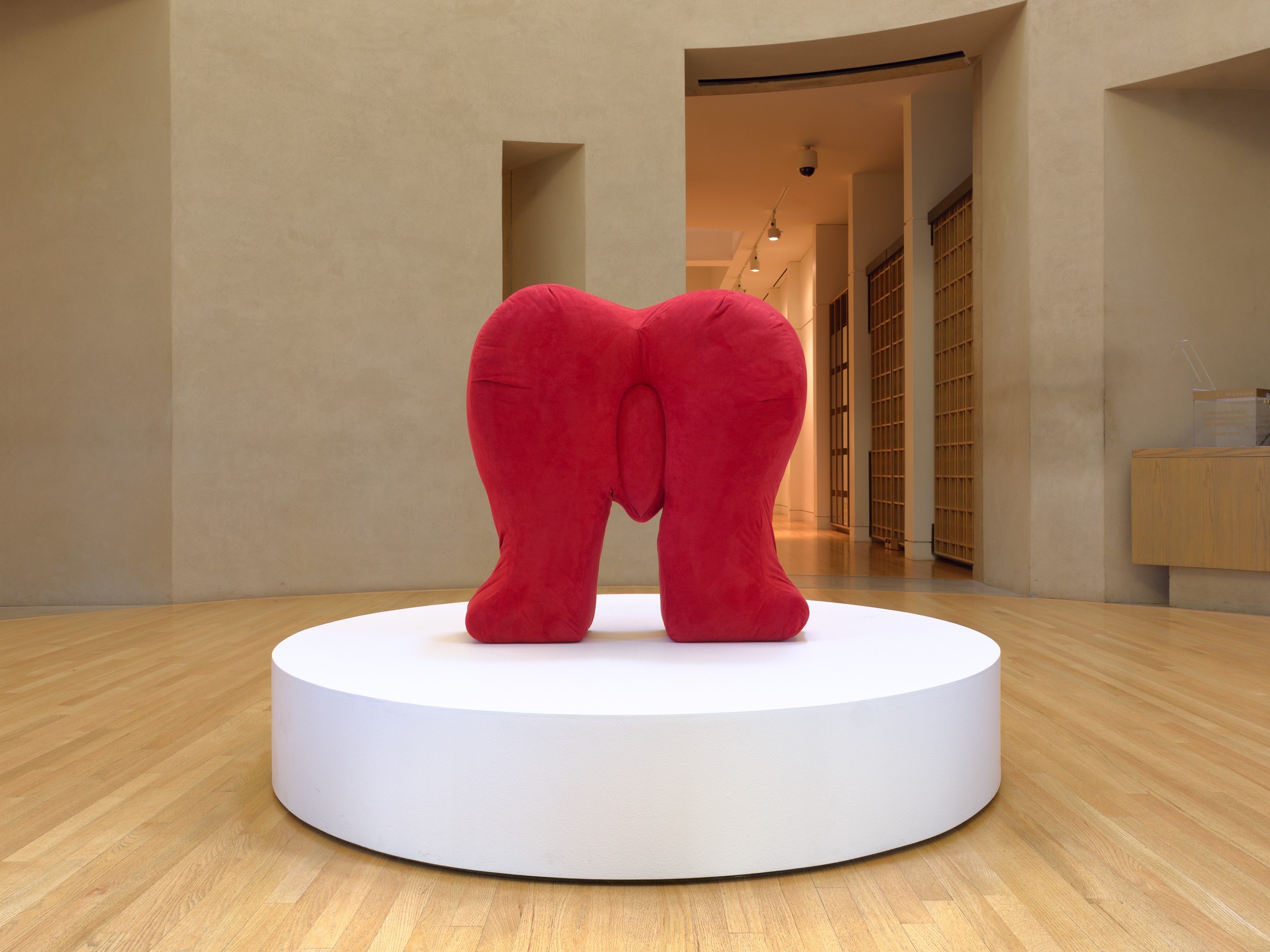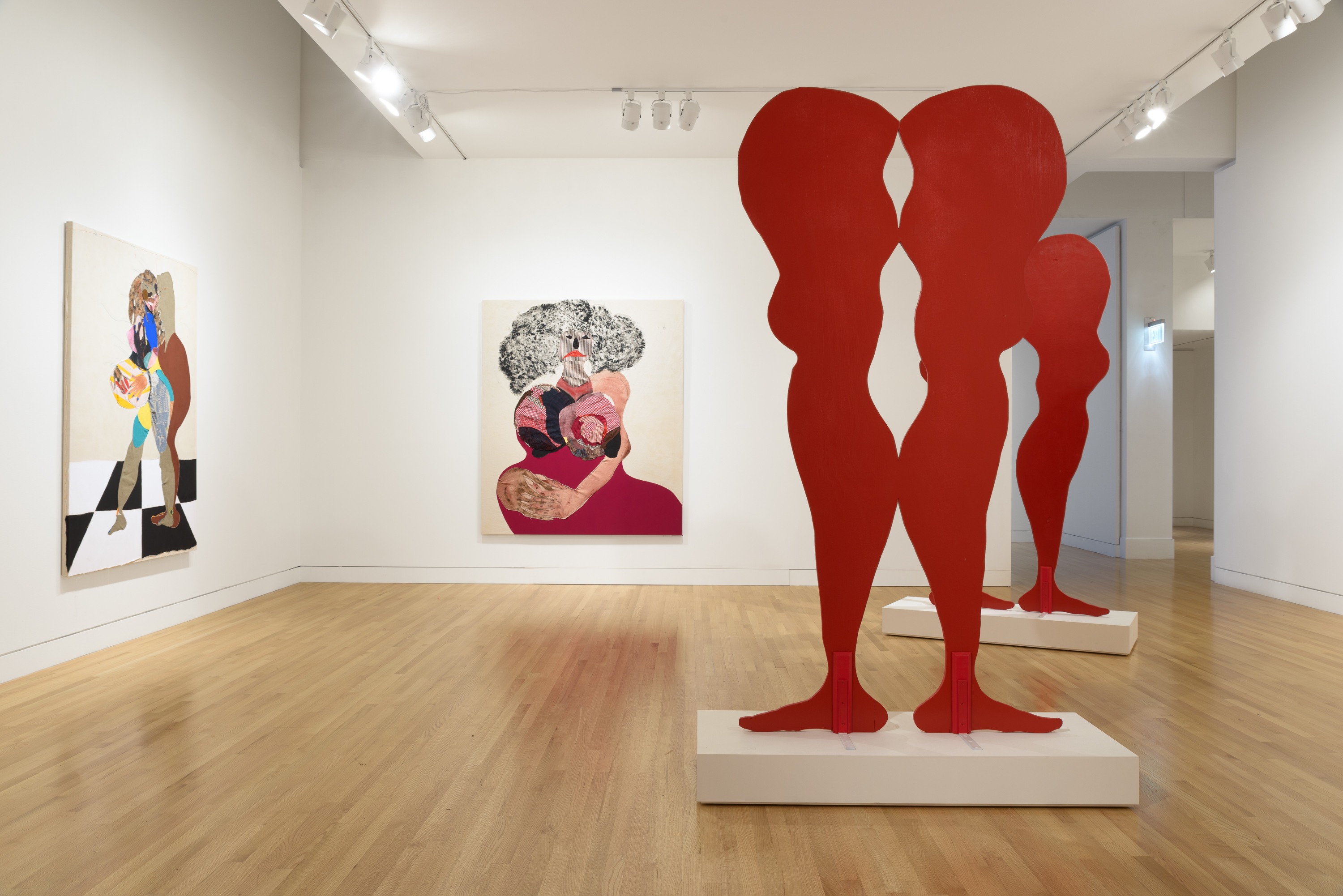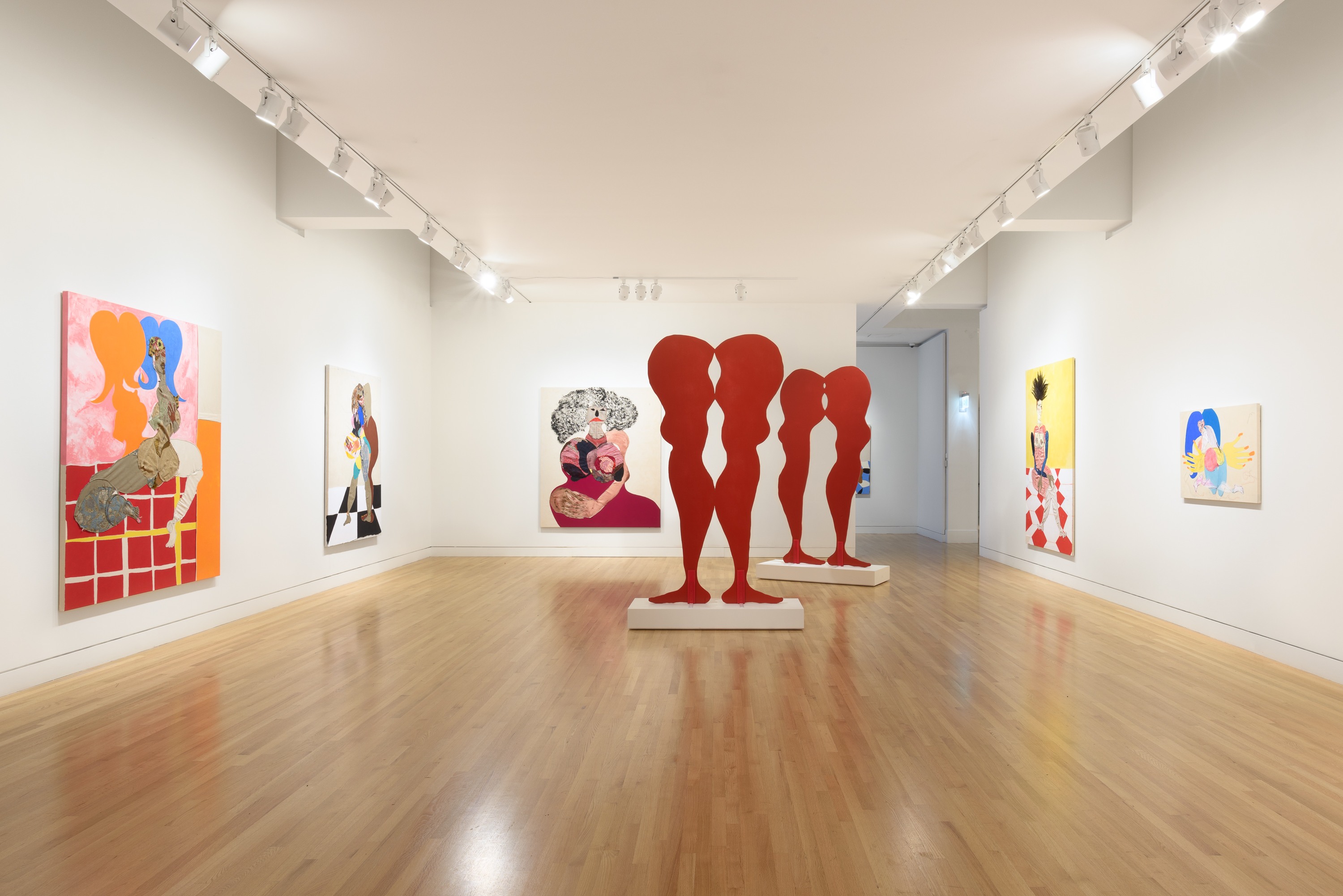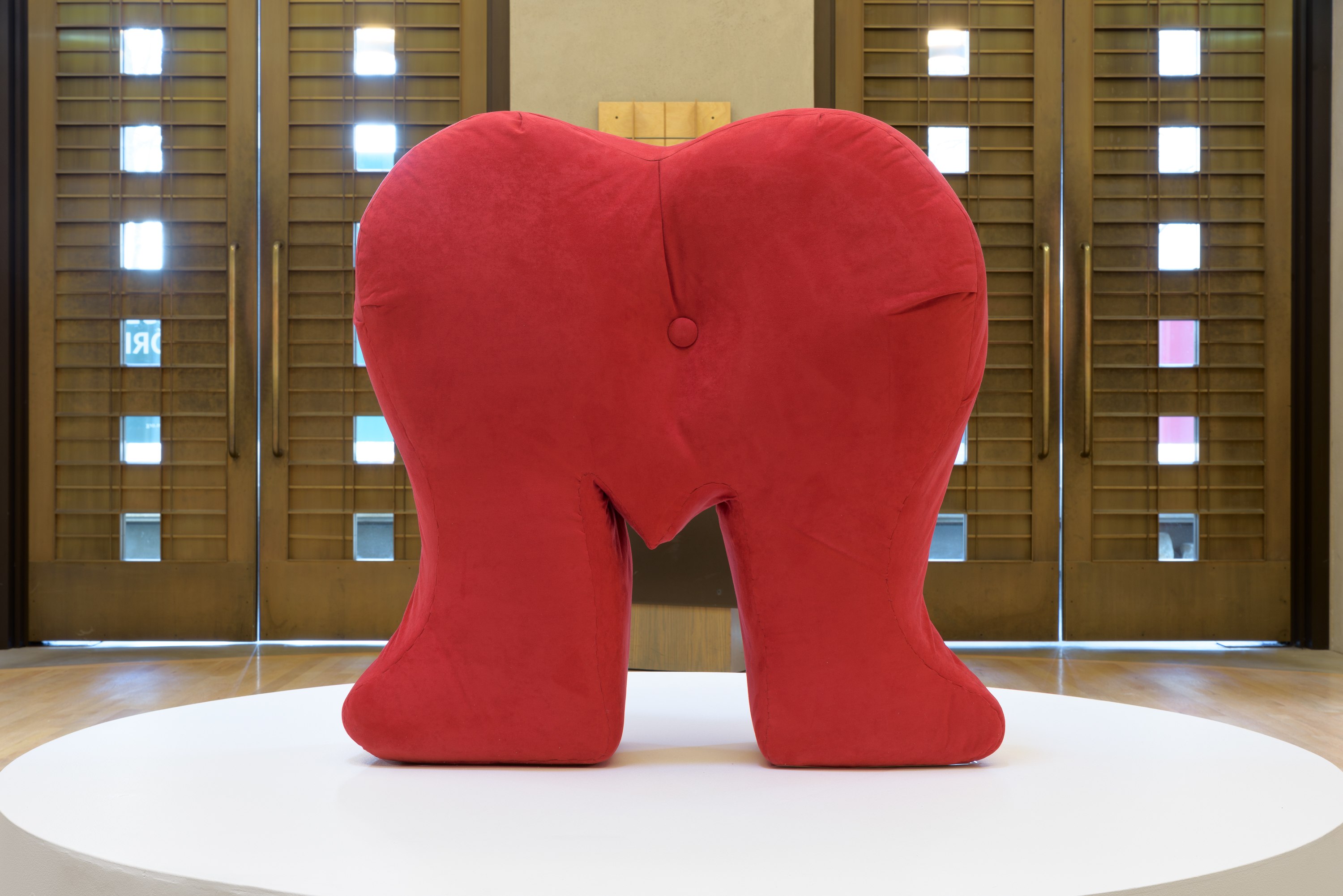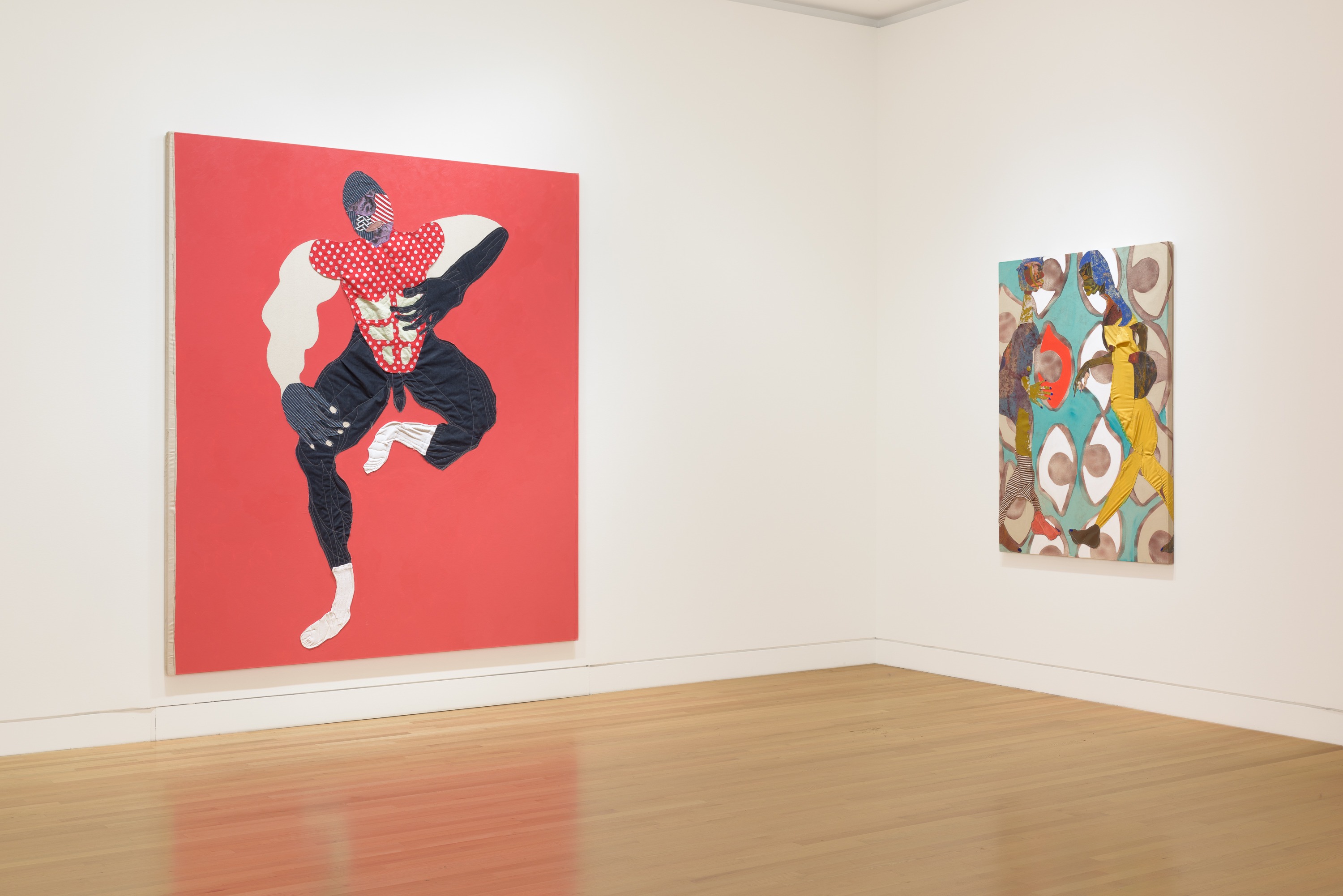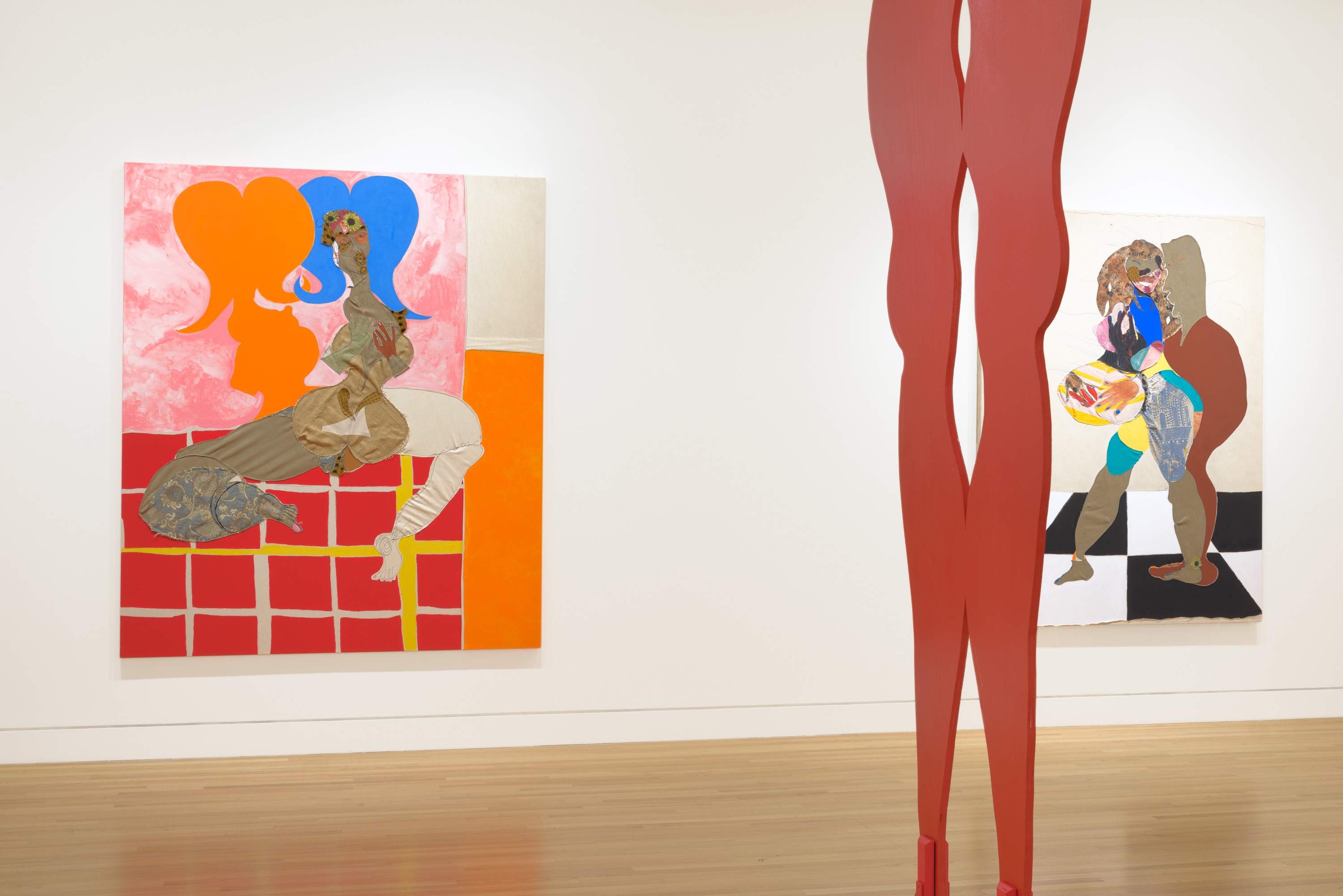Overview
Tschabalala Self’s work examines the intersectionality of race, gender, and sexuality, focusing particularly on the iconographic significance of the black female body in contemporary culture The artist creates exuberant, multilayered characters—not depictions of herself or others, but “avatars”—that resist reductive representations of blackness, performing their individual identities despite the voyeuristic fantasies of the spectator. These avatars are most often constructed from machine-sewn fabric scraps including velvet, denim, and animal prints, combined with cut-out portions of discarded canvases, and layered with acrylic paint, oil pastel, and charcoal. The specific associations attached to certain fabrics and patterns anchor Self's characters in reality, becoming a visual grammar through which new personalities and alternative narratives can be imagined.
Self’s first solo museum exhibition in the United States, Tschabalala Self brings together figurative works in painting, drawing, sculpture, and video, populating the gallery with characters from across her budding career. The exaggerated physical attributes of the depicted figures reflect the artist’s own experiences and contemporary cultural attitudes toward race and gender, but their detailing celebrates the complexities of black identity. These complexities are often obscured in American culture, in which an entrenched legacy of stereotyping makes the black female figure hypervisible—explicitly sexualized or enshrouded in narratives of pain and suffering. Self’s unruly subjects disrupt expectations by asserting their agency and physical autonomy. Seen leaping, dancing, touching themselves, coupling, and contorting their bodies according to their own desires, her avatars assert that ordinary pleasures can also be acts of defiance.

